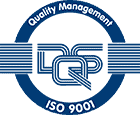Applications for our lasers
The polyvalence of CryLaS laser systems, makes them useful for a wide range of applications. In addition to scientific research, the lasers are reliably used in a wide range of OEM applications in industrial environments, medicine, biochemistry, the semiconductor industry, ophthalmology and materials processing. Our high-quality, compact, stable lasers have outstanding long-term stability, making them ideal for continuous operation in high-volume applications.
Together we will find the right solution.
Let our photonics expert sales team advise you on your requirements.
All of our departments are staffed by experts in their fields. We will be glad to advise you on your application, inform you about our products and take all important variables into account to find the best possible solution.




